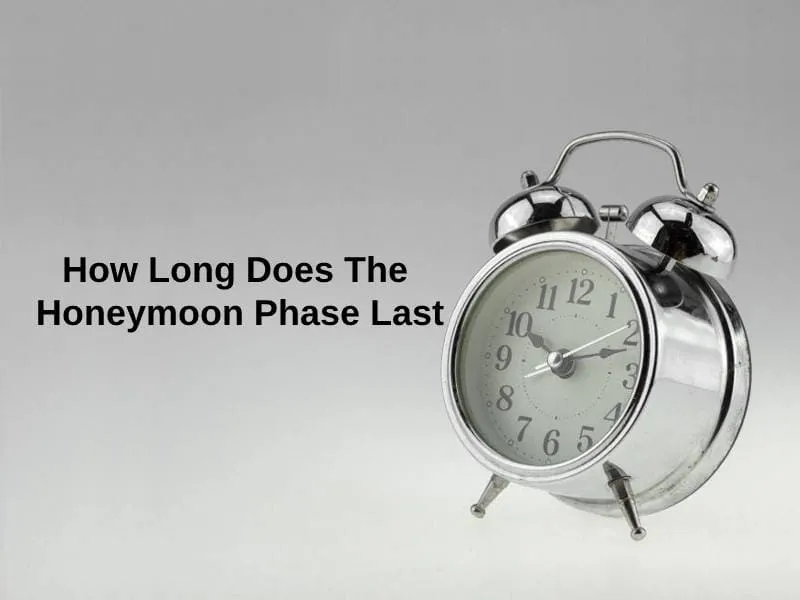What is the Honeymoon Period?
The honeymoon period, often romanticized in movies and novels, is the initial phase of a romantic relationship characterized by intense feelings of love, attraction, and excitement. It’s a time when couples often feel a heightened sense of connection, idealization, and a desire to spend as much time together as possible. This period is marked by a surge of positive emotions, making it feel as if nothing can go wrong. It is a natural phase in the development of any relationship, setting the stage for a deeper bond.
Definition and Characteristics
Defining the honeymoon phase involves recognizing its key characteristics. It’s a time of infatuation where partners are often blind to each other’s flaws, focusing instead on their positive attributes. There’s an intense physical and emotional attraction, accompanied by a constant desire for closeness and intimacy. Communication is often frequent and effusive, with couples sharing their thoughts, dreams, and feelings openly. During this time, partners are often on their ‘best behavior,’ aiming to create a positive impression and strengthen the connection. The focus is primarily on the joys of the relationship, and any challenges are often overlooked or minimized.
Signs You’re in the Honeymoon Phase

Several telltale signs indicate you’re in the honeymoon phase. These include constantly thinking about your partner, feeling a strong sense of euphoria when you’re together, and missing them intensely when apart. You’re likely to prioritize spending time with your partner over other activities and may find yourself frequently smiling or feeling giddy. Physical intimacy increases, and there is a strong desire for closeness. Furthermore, you might experience a tendency to idealize your partner, overlooking any minor flaws or differences. Overall, it’s a time of intense positive emotions and a deep sense of connection.
Fact 1 Typical Duration of the Honeymoon Phase
The duration of the honeymoon phase varies, but it generally lasts from a few months to two years. Some couples experience a more extended period, while others may see the intensity wane sooner. Many factors influence how long this phase persists. It’s important to remember that the end of the honeymoon phase isn’t necessarily a negative thing; it’s a natural transition towards a deeper, more realistic understanding of the relationship. The time spent in this phase sets the foundation for a long-lasting bond, but eventually, the initial infatuation gives way to a more stable and realistic view of the relationship and each partner’s personality.
Factors Influencing the Honeymoon Period
Several factors affect the length of the honeymoon phase, including relationship dynamics and individual personalities. The way couples interact, communicate, and handle conflicts plays a significant role. Couples who have healthy communication patterns and a solid foundation based on shared values often experience a more extended honeymoon phase. Individual personalities also come into play; for instance, individuals with a tendency towards idealism may prolong the phase. The intensity of the initial attraction, the amount of time spent together, and the overall circumstances of the relationship all contribute to the duration of this initial period.
Relationship Dynamics

The dynamics between partners significantly impact the honeymoon phase. If a couple shares compatible interests, values, and goals, they are likely to have a more prolonged and fulfilling honeymoon period. How they handle disagreements, support each other, and make decisions together also plays a role. A strong foundation based on trust, respect, and mutual understanding helps sustain the positive feelings of the initial phase. Healthy relationship dynamics promote open communication, empathy, and the ability to navigate challenges together, which extends the period of infatuation and lays the groundwork for a lasting partnership.
Individual Personalities
Individual personalities significantly influence the duration of the honeymoon phase. People with a more optimistic outlook or a tendency to idealize their partners might experience a longer period of infatuation. In contrast, those who are more cautious or analytical might see the honeymoon phase as relatively shorter. Personality traits such as openness, conscientiousness, and emotional stability contribute to how individuals perceive and experience the initial stages of a relationship. Recognizing how personality affects the honeymoon phase allows couples to understand and appreciate their unique relationship dynamics. These insights facilitate adapting their expectations and maintaining a healthy relationship.
Fact 2 Why Does the Honeymoon Phase End?
The end of the honeymoon phase is often attributed to a shift in focus from the initial infatuation towards a more realistic understanding of the relationship. As couples spend more time together, they become more familiar with each other’s habits, quirks, and flaws. The initial intense feelings of excitement and idealization gradually give way to a more balanced perspective. The realities of daily life, such as work, responsibilities, and external stressors, also begin to impact the relationship. It’s important to recognize that the end of the honeymoon phase doesn’t necessarily signify the end of love, but rather a transition toward a more profound connection.
Reality vs. Expectations

The end of the honeymoon phase frequently involves a clash between initial expectations and the realities of the relationship. During the honeymoon phase, couples often create an idealized version of their partner and the relationship. As time passes, the imperfections and differences that were initially overlooked become more apparent. Real-life responsibilities and external pressures can create stress, leading to disagreements and challenges that weren’t present during the early stages. It’s essential to adjust expectations and accept that no relationship can maintain the same level of intense excitement over the long term. Realistic expectations help couples navigate challenges and build a more solid and resilient connection.
The Role of Neurochemistry
Neurochemistry also plays a critical role in the honeymoon phase. During this period, the brain releases high levels of dopamine, serotonin, and oxytocin, leading to feelings of pleasure, excitement, and bonding. As couples spend more time together, the levels of these neurochemicals gradually decrease, and the initial intense emotions subside. The brain’s reward system adapts, and the feelings of infatuation diminish. Although the intensity of the neurochemical response may change, the transition doesn’t mean that love and attraction disappear. Instead, these changes are natural biological processes that lead to a more stable and sustainable form of love.
Fact 3 Strategies for Extending the Honeymoon Phase
Although the honeymoon phase naturally fades, couples can take steps to prolong the positive feelings and excitement. Focusing on maintaining novelty, effective communication, and shared experiences are key. Making an effort to regularly surprise each other, trying new activities, and exploring new interests together can reignite the initial spark. Openly expressing feelings, actively listening, and resolving conflicts constructively are crucial for maintaining a strong emotional connection. These strategies help keep the relationship exciting and engaging, enabling couples to extend the positive aspects of the honeymoon phase for a more extended time.
Maintaining Novelty and Excitement

Maintaining novelty and excitement is critical for prolonging the positive feelings of the honeymoon phase. Couples can achieve this by regularly introducing new experiences, trying new activities, and keeping their relationship fresh. This might include planning surprise dates, traveling to new places, or pursuing shared hobbies. Trying new things together stimulates the brain’s reward system, which can help sustain the feelings of excitement and anticipation. It’s essential to avoid falling into predictable routines and to actively seek out opportunities for fun and adventure. By prioritizing novelty and excitement, couples can keep the romance alive and foster a deeper connection.
Effective Communication
Effective communication is a cornerstone of extending the honeymoon phase. It involves openly and honestly expressing thoughts, feelings, and needs. Practicing active listening, which entails paying full attention to your partner and responding with empathy, is essential. Regularly checking in with each other, sharing your day, and discussing relationship challenges constructively helps maintain a strong emotional bond. Couples should learn to resolve conflicts in a healthy way, focusing on understanding each other’s perspectives rather than assigning blame. By prioritizing open and honest communication, couples build trust, deepen intimacy, and extend the positive feelings associated with the honeymoon phase.
Fact 4 The Importance of Realistic Expectations
Setting realistic expectations is essential for navigating the transition beyond the honeymoon phase. Couples should understand that the intense infatuation of the initial period will naturally wane. They should accept that differences, disagreements, and challenges are inevitable in any long-term relationship. It’s crucial to avoid comparing your relationship to unrealistic portrayals in the media. Instead, focus on building a partnership based on mutual respect, trust, and shared values. By approaching the relationship with realistic expectations, couples can avoid disappointment and build a more solid and resilient connection. This mindset allows them to weather the natural shifts that occur over time and create a lasting bond.
Avoiding Disappointment

Avoiding disappointment requires couples to understand that the intense emotions of the honeymoon phase will eventually give way to a more balanced dynamic. This means accepting that your partner won’t always be perfect, and that conflicts and disagreements are a normal part of any relationship. Avoid unrealistic expectations about how your partner should behave or how the relationship should progress. Develop a mindset that embraces imperfections and focuses on the positive aspects of the relationship. Open and honest communication, combined with a willingness to compromise and work through challenges, is essential for avoiding disappointment and building a resilient connection that can withstand the tests of time.
Building a Strong Foundation
Building a strong foundation involves focusing on shared values, mutual respect, and open communication. Couples should establish a foundation of trust by being honest, reliable, and supportive of each other. Prioritize spending quality time together, participating in activities you both enjoy, and creating shared memories. Effective communication is essential for addressing conflicts constructively and understanding each other’s needs. This strong foundation serves as the bedrock of the relationship, helping couples navigate challenges and sustain their connection over the long term. By prioritizing these elements, couples can create a bond that is both resilient and fulfilling.
Fact 5 Beyond the Honeymoon Phase: Building a Lasting Relationship
Building a lasting relationship requires a conscious effort to nurture and sustain the connection. Once the honeymoon phase has passed, couples need to focus on building intimacy, fostering trust, and maintaining open communication. This includes making time for each other, even amidst busy schedules, and actively listening to each other’s needs and concerns. It involves supporting each other’s goals and dreams, celebrating successes, and offering comfort during difficult times. By prioritizing these practices, couples create a relationship that grows deeper and more meaningful over time. This is also a strong base for overcoming the conflicts that come with time.
Navigating Conflicts

Navigating conflicts constructively is essential for building a lasting relationship. It involves learning effective communication techniques such as active listening and expressing your needs clearly and respectfully. Rather than avoiding conflict, couples should address issues promptly and work together to find solutions. It’s crucial to understand your partner’s perspective, even when you disagree. Seeking professional help, such as couples therapy, can be beneficial for developing healthy conflict resolution strategies. By approaching conflicts with empathy, patience, and a willingness to compromise, couples can strengthen their bond and create a more resilient relationship.
Continuing to Grow Together
Continuing to grow together involves supporting each other’s personal development, pursuing shared goals, and evolving as individuals and as a couple. Couples should encourage each other’s interests and hobbies, creating space for personal growth. It also involves setting shared goals and working together to achieve them, whether it’s traveling, building a home, or starting a family. Regularly evaluating the relationship and making adjustments as needed is essential for ensuring that both partners feel fulfilled and connected. By prioritizing ongoing growth and development, couples can create a lasting relationship that becomes more profound and meaningful over time.
